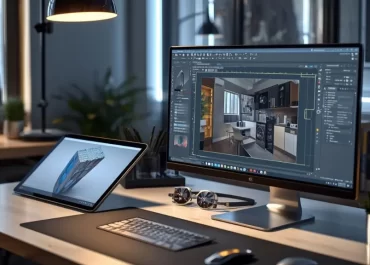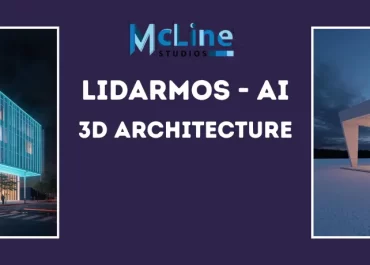When it comes to American architecture, many different styles and trends have influenced the design and construction of buildings throughout the country. From colonial to contemporary, each architectural style has its own unique features and design elements that make it stand out.
This article will explore the 5 most popular American architectural styles, including their history, key features, and design elements. We will also discuss how 3D rendering services, exterior rendering, interior rendering, and architectural walkthroughs can be used to showcase and design these styles.
By the end of this article, you will have a better understanding of the most common architectural styles in America and the tools and techniques used to bring them to life.
To provide a comprehensive overview of American architecture, we will begin with a brief overview of American architectural history. This will help to contextualize the different architectural styles that have emerged over time and provide insight into the cultural and social influences that have shaped them.
After this, we will delve into the 5 most popular American architectural styles. These styles have endured for decades, if not centuries, and have had a significant impact on the built environment of the United States.
We will explore the unique characteristics of each style, such as their materials, rooflines, windows, and ornamentation, and provide examples of notable buildings that exemplify each style.
Colonial Style

The colonial style is one of the oldest and most enduring architectural styles in America, dating back to the 1600s. As the first European settlers arrived in North America, they brought with them architectural influences from their homelands, including England, France, and the Netherlands. These influences merged with the local materials and building techniques to create a distinct style that dominated the early American landscape.
Key features of colonial architecture include a symmetrical facade, a steep roof with gables, double-hung windows, and a central entry door. The use of brick, stone, or wood was common, and decorative elements such as shutters, cornices, and pediments were also common. The interior of colonial homes typically featured a central fireplace and a simple, functional layout.
Examples of colonial-style architecture include the Governor’s Palace in Williamsburg, Virginia, and Independence Hall in Philadelphia, Pennsylvania. These buildings showcase the grandeur and elegance of the colonial style, with their use of classical elements and intricate details.
To showcase colonial-style buildings in a modern context, 3D rendering services, exterior rendering, and interior rendering can be utilized. These techniques allow architects and designers to create accurate and photorealistic representations of colonial homes and buildings, which can be used for marketing, visualization, and design purposes.
In addition to rendering, architectural walkthroughs can also be an important tool for colonial-style buildings. This allows clients and stakeholders to experience the interior and exterior of a building in a virtual environment, providing a realistic and immersive understanding of the space and design. Overall, the colonial style remains an iconic and timeless style in American architecture, and its influence can still be seen in many buildings today.
Craftsman Style
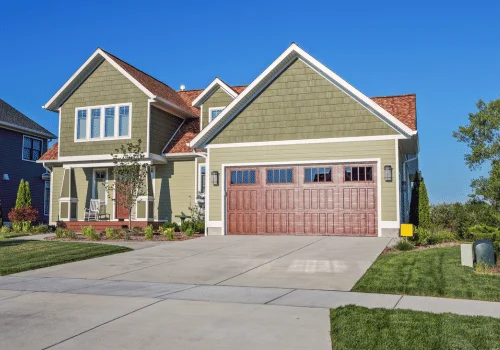
The Craftsman style emerged in the late 19th and early 20th centuries, as a reaction against the ornate and elaborate Victorian style. The movement was inspired by the Arts and Crafts movement in Europe, which emphasized craftsmanship, simplicity, and natural materials. The Craftsman style became a popular choice for homes and buildings in the early 20th century, particularly in the western United States.
Key features of the Craftsman style include a low-pitched roof, overhanging eaves, exposed rafters, and a front porch with tapered columns. The use of natural materials such as wood, stone, and brick is also a hallmark of the style. Interior features may include built-in cabinetry, a central fireplace, and exposed beams.
Examples of Craftsman-style architecture include the Gamble House in Pasadena, California, and the Charles Sumner Greene House in Carmel, California. These buildings showcase the distinctive features and design elements of the Craftsman style and their use of natural materials and attention to detail.
To showcase Craftsman-style buildings in a modern context, 3D rendering services, exterior rendering, and interior rendering can be utilized. These techniques allow architects and designers to create accurate and photorealistic representations of Craftsman homes and buildings, which can be used for marketing, visualization, and design purposes.
In addition to rendering, architectural walkthroughs can also be an important tool for Craftsman-style buildings. This allows clients and stakeholders to experience the interior and exterior of a building in a virtual environment, providing a realistic and immersive understanding of the space and design.
Overall, the Craftsman style represents a departure from the ornate and elaborate styles that came before it, emphasizing simplicity, natural materials, and craftsmanship. Its influence can still be seen in many homes and buildings today, and it remains a popular choice for those seeking a timeless and elegant aesthetic.
Modern Style
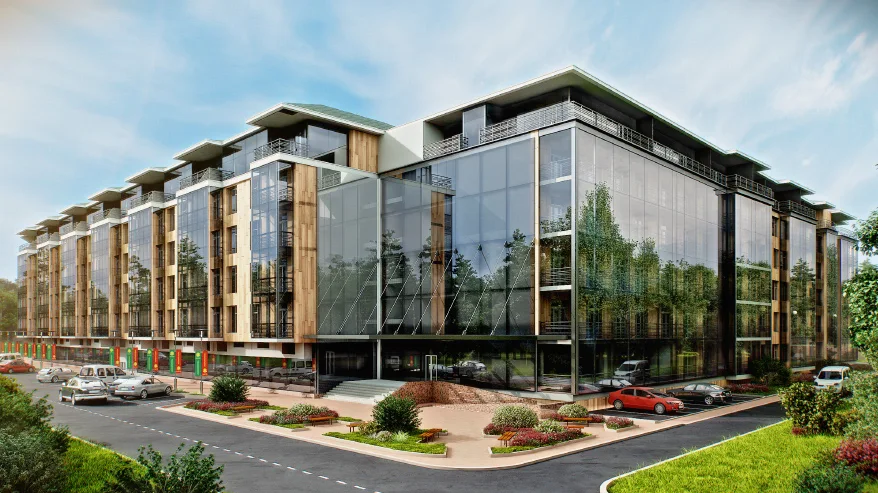
The Modern style, also known as Mid-Century Modern, emerged in the mid-20th century as a departure from the traditional styles that had dominated American architecture. The movement was influenced by the rise of industrialization, new materials and technologies, and the desire for functional and efficient designs. The Modern style is characterized by clean lines, simple forms, and a focus on functionality.
Key features of the Modern style include large windows, open floor plans, flat roofs, and an emphasis on indoor-outdoor living. The use of new materials such as concrete, steel, and glass is also a hallmark of the style. Interior features may include exposed structural elements, minimal ornamentation, and built-in furniture.
Examples of Modern-style architecture include the Farnsworth House in Illinois, designed by Ludwig Mies van der Rohe, and the Kaufmann House in California, designed by Richard Neutra. These buildings showcase the minimalist and functional aspects of the Modern style, as well as its use of new materials and technologies.
To showcase Modern-style buildings in a modern context, 3D rendering services, exterior rendering, and interior rendering can be utilized. These techniques allow architects and designers to create accurate and photorealistic representations of Modern homes and buildings, which can be used for marketing, visualization, and design purposes.
In addition to rendering, architectural walkthroughs can also be an important tool for Modern-style buildings. This allows clients and stakeholders to experience the interior and exterior of a building in a virtual environment, providing a realistic and immersive understanding of the space and design.
Overall, the Modern style represents a departure from traditional styles, emphasizing functionality, simplicity, and the use of new materials and technologies. Its influence can still be seen in many homes and buildings today, and it remains a popular choice for those seeking a sleek and modern aesthetic.
Contemporary Style
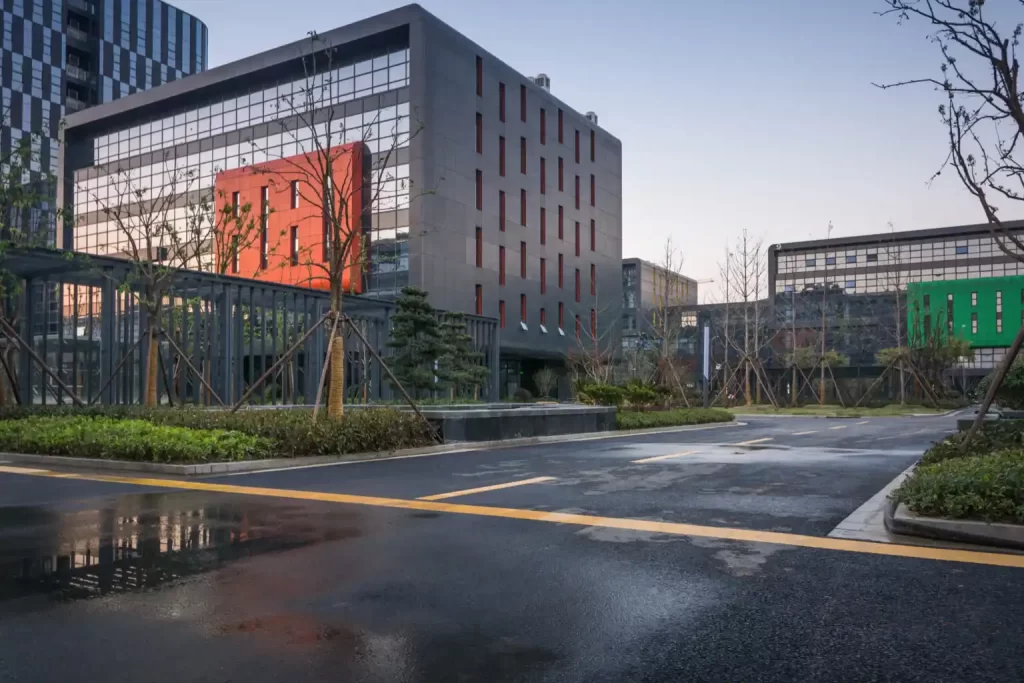
The Contemporary style is a broad term that refers to current trends in architecture that reflect the present moment. It is characterized by a focus on innovation, experimentation, and a rejection of traditional styles and conventions. The style is constantly evolving and is often shaped by advances in technology, materials, and cultural trends.
Key features of the Contemporary style include a mix of different materials, such as wood, glass, metal, and concrete, as well as unique and asymmetrical forms. The style also emphasizes the use of sustainable and energy-efficient materials and techniques. Interiors of Contemporary buildings may feature open floor plans, high ceilings, and a focus on natural light.
Examples of Contemporary style architecture include the Guggenheim Museum Bilbao in Spain, designed by Frank Gehry, and the CCTV headquarters in Beijing, designed by Rem Koolhaas. These buildings showcase the unique forms and material mixtures that are characteristic of the Contemporary style.
To showcase Contemporary buildings in a modern context, 3D rendering services, exterior rendering, and interior rendering can be utilized. These techniques allow architects and designers to create accurate and photorealistic representations of Contemporary homes and buildings, which can be used for marketing, visualization, and design purposes.
In addition to rendering, architectural walkthroughs can also be an important tool for Contemporary style buildings. This allows clients and stakeholders to experience the interior and exterior of a building in a virtual environment, providing a realistic and immersive understanding of the space and design.
Overall, the Contemporary style represents the cutting edge of architecture, reflecting the latest trends and innovations. Its unique forms and mixtures of materials make it a popular choice for those seeking a bold and forward-thinking aesthetic.
Victorian Style

Victorian-style American houses, prevalent during Queen Victoria’s reign in the 19th century, boast ornate exteriors, asymmetrical facades, and a fusion of architectural styles. Elaborate detailing, such as intricate woodwork and decorative trim, distinguishes these homes, often accentuated by contrasting paint colors. Asymmetry reigns supreme, with projecting bays, towers, and porches creating dynamic facades.
Steeply pitched roofs adorned with decorative shingles or metalwork, along with towers and turrets, contribute to the fairytale-like allure of Victorian houses. Reflecting a fascination with historical revivalism, these homes encompass various styles like Gothic Revival, Italianate, and Queen Anne, showcasing experimentation and creativity.
Stained glass windows add vibrancy and elegance, while wrap-around porches adorned with decorative columns provide additional living space and charm. Inside, high ceilings with intricate moldings and medallions, spacious rooms, and ornate fireplaces define Victorian interiors. Victorian-style American houses remain timeless symbols of grandeur and sophistication, captivating with their intricate designs and historical significance.
Conclusion
In summary, American architecture is a rich and diverse field that has been shaped by a variety of historical, cultural, and technological influences. From the Colonial style to the Contemporary style, many popular architectural styles have left their mark on the American landscape.
The 5 most popular American architectural styles are the colonial style, victorian style, craftsman style, modern style, and contemporary style. Each of these styles has its own unique features and design elements, and they continue to inspire architects and designers today.
To showcase and design American architecture, 3D rendering services, exterior rendering, interior rendering, and architectural walkthroughs are important tools that can be used to create accurate and photorealistic representations of buildings. These techniques allow architects and designers to visualize their designs and communicate them to clients and stakeholders in a more effective way.
Looking forward, the future of American architecture is sure to be shaped by new technologies, materials, and cultural trends. As we continue to push the boundaries of design and innovation, the possibilities for American architecture are endless.
In conclusion, American architecture is a vibrant and constantly evolving field that reflects the rich history and diversity of the United States. By utilizing the latest techniques and tools, architects and designers can continue to push the boundaries of design and create buildings that are both functional and beautiful.


